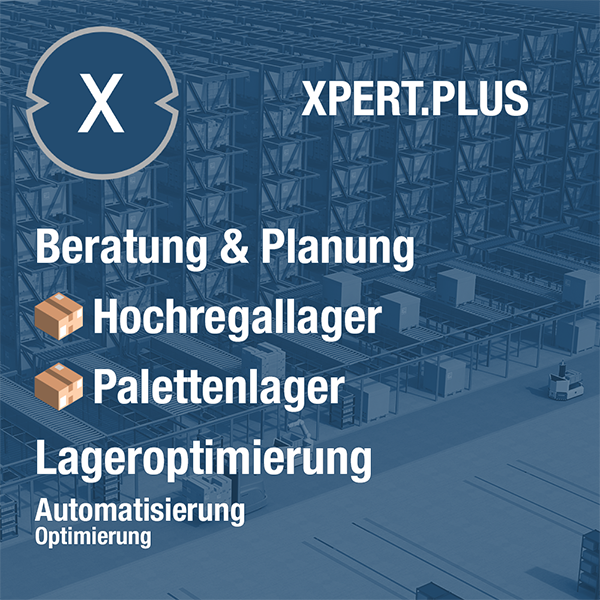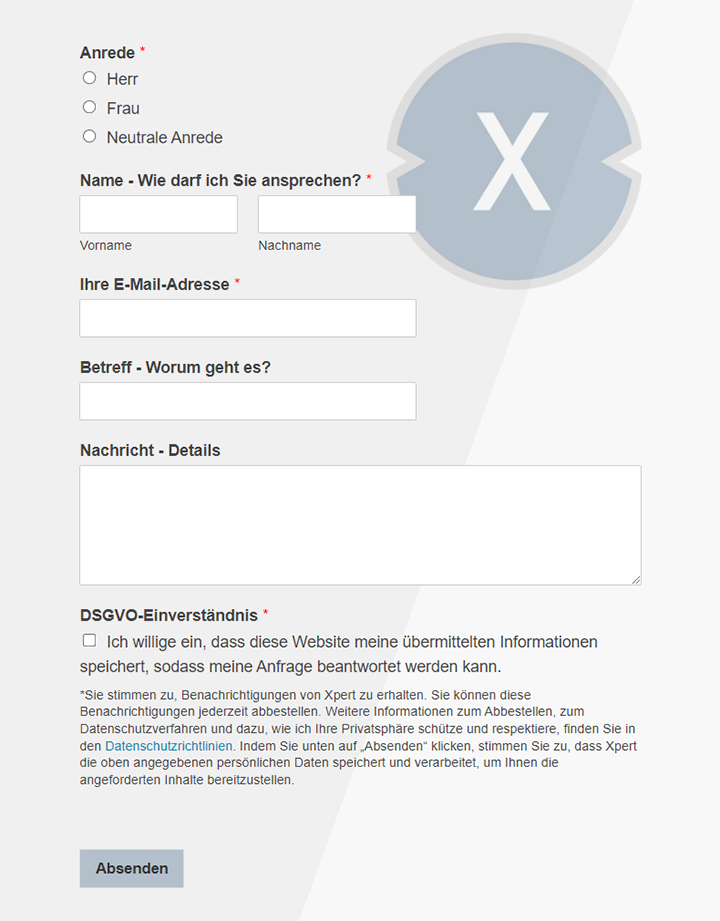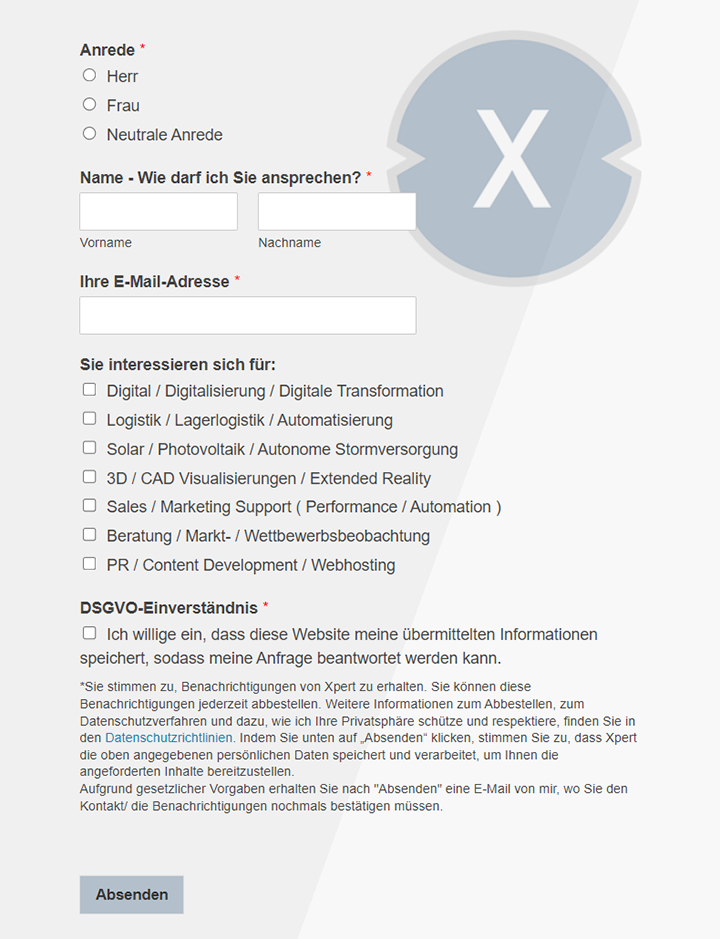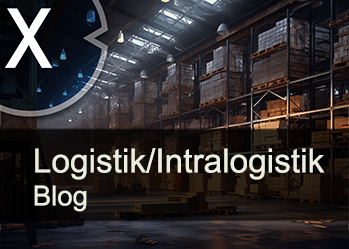The pallet as the backbone of world trade: A global market analysis of pallet logistics
Xpert pre-release
Language selection 📢
Published on: August 26, 2025 / Updated on: August 26, 2025 – Author: Konrad Wolfenstein

The pallet as the backbone of world trade: A global market analysis of pallet logistics – Image: Xpert.Digital
From a tool of war to a high-tech network: The Palette 2.0
### From a tool of war to the backbone of global trade: The astonishing story of the pallet ### The unsung hero of world trade: How the pallet is revolutionizing e-commerce and the supply chains of the future ### The quiet revolution: How smart pallets with sensors and IoT are changing logistics forever ### An underestimated billion-dollar market: Why the future of logistics rests on a simple wooden board ### More than just wood: The secret behind the pallet, the true backbone of e-commerce and global trade ### The inconspicuous object that keeps our world running: The true importance of the pallet for you and your shopping ###
Billion-dollar market on wooden boards: The underestimated logistics innovation
In the complex machinery of global trade, there is one object so ubiquitous and inconspicuous that its fundamental importance is easily overlooked: the pallet. It is the silent backbone of our modern economy, a simple load carrier made of wood, plastic, or metal, without which the rapid and efficient flow of goods—from groceries in your supermarket to the latest smartphone—would be unthinkable. Yet the history and future of this object are far more fascinating than its humble appearance suggests.
Their journey doesn't begin in a warehouse, but on the battlefields of World War II, where a logistical revolution was born out of military necessity. The true stroke of genius, however, wasn't the invention of the platform itself, but its subsequent standardization into the Euro pallet, which created a universal exchange pool and reduced logistics costs in Europe by up to 90%. Today, in the age of global e-commerce, fragile supply chains, and a growing awareness of sustainability, the pallet is on the cusp of the next transformation. It is evolving from a passive wooden board into an intelligent, data-generating node in the Internet of Things (IoT), promising seamless transparency from the producer to the end customer.
This comprehensive insight explores the range from every angle: from its military origins to the establishment of global standards and analysis of a multi-billion dollar market, to the megatrends like sustainability and automation that are shaping its future. Learn why this simple object is at the heart of the next industrial revolution in logistics and how it will forever change the way we move goods.
The inconspicuous revolution in the movement of goods
In the complex world of global trade, there are objects whose fundamental importance is in direct contrast to their inconspicuous appearance. The pallet is one such object. Flat, rectangular, and often made of simple wood, it is undeniably one of the most important inventions in the history of modern logistics. Without this simple load carrier, today's goods traffic, characterized by high speed, efficiency, and scalability, would be unthinkable. Whether food, machinery, pharmaceuticals, or electronics—hardly any shipment of goods today can get by without the pallet, which acts as the true backbone of global trade. It is the unsung hero that makes it possible to bundle individual goods into standardized loading units that can be moved, stored, and transported mechanically.
The true genius of the pallet, however, lies not in its physical form, but in its role as a catalyst for system-wide standardization. It created a universal platform, a common protocol for the physical movement of goods. This standardization enabled the development and efficient use of forklifts, high-bay warehouses, automated conveyor systems, and today, driverless transport vehicles. Much like the TCP/IP protocol laid the foundation for data exchange on the internet, the pallet established a universal language for material flow. This report analyzes the evolution of this fundamental economic protocol—from its military origins through the establishment of global standards and materials to its current transformation into an intelligent, data-generating asset in the digitized supply chain. It explores global market dynamics, driving megatrends such as e-commerce and sustainability, and the technological innovations that will define the future of pallet logistics.
The historical development of the pallet: From a tool of war to a logistics icon
Origins in military needs
The story of the modern pallet, like so many logistical innovations, began with a military necessity. During World War II, the U.S. Army faced the daunting challenge of transporting and loading enormous quantities of equipment, ammunition, and supplies quickly and efficiently over long distances. Manually loading individual crates and bags was slow, labor-intensive, and inefficient. A method was needed to bundle goods into larger units. The result was a simple wooden platform on which goods could be stacked and moved as a single unit.
This development was inextricably linked to the perfection of another piece of equipment: the forklift. Although the first patents for pallet-like platforms, such as Howard T. Hallowell's "Lift Truck Platform," were filed as early as 1924, it was the symbiosis of pallet and forklift that ushered in a new era of mechanized material handling. This combination enabled a completely new level of automation in warehouses, ports, and on the front lines. Loading times could be drastically reduced, which in a wartime context could mean the difference between victory and defeat. After the war, with the rise of mass production and growing international trade, this efficiency became the driving force behind economic reconstruction. By the 1950s, millions of pallets were in use worldwide.
The milestone of standardization
The decisive turning point in the history of the pallet in Europe occurred in 1961. Until then, pallets existed, but they were often custom-made and lacked standardized dimensions, which made cross-border transport difficult. To solve this problem, several European railway companies joined forces under the umbrella of the Union of International Railways (UIC) and signed an agreement for a standardized, interchangeable pallet: the Europool pallet, now known as the Europallet.
The decision to adopt the standard dimensions of 1200 x 800 mm was a strategic decision aimed at optimizing the loading areas of railway wagons of the time. This standardization made it possible for exactly two pallets to fit across or three pallets lengthwise into the transport vehicles, thus maximizing the use of the loading space. However, the true revolution lay not only in the dimensions, but in the system that was built around them: the European Pallet Pool (EPP). This system was based on the principle of "swap instead of buy." Instead of transporting empty pallets back to the sender after a delivery, which was a complex and expensive process, they could simply be exchanged for empty pallets of equivalent value at transshipment points. This exchange system, now firmly established primarily in Germany, France, Austria, and the Benelux countries, reduced loading times by up to 90% compared to the pre-pallet era and significantly lowered logistics costs. It created an open standard that fostered an entire economic ecosystem and laid the foundation for today's European logistics.
The role of organizations and the establishment of norms
Maintaining such a successful open standard requires a robust governance structure for quality assurance and rule-making. Originally, the exchange pool was managed by the UIC member railways themselves. In the 1970s, Deutsche Bundesbahn transferred its trademark rights to symbols such as "DB," "EUR im Oval," and "EPAL" to the "Gütegemeinschaft Paletten," the forerunner of today's European Pallet Association (EPAL).
EPAL was founded in 1991 and long served as a service provider for the "EUR im Oval" brand, responsible for quality assurance, licensing manufacturers and repair shops, and conducting independent inspections. This central oversight was crucial to ensuring the high quality and interchangeability of the pallets in the pool. However, in 2012, the collaboration between EPAL and the trademark holder of the "EUR im Oval" brand, the Rail Cargo Group (RCG), ended. Since then, the two brands have existed in parallel as competitors in the open European exchange pool. This development illustrates the typical challenges that successful standards face during their development – from establishment and scaling to governance conflicts and competition. Nevertheless, the Europallet, whether under the EPAL or EUR brand, remains the undisputed backbone of European goods transport.
Global pallet landscape: A typology of load carriers
The world of pallets is far more diverse than it appears at first glance. Over decades, different standards and materials have been established depending on geographical region, industrial requirements, and logistical necessity. This global pallet landscape is the physical reflection of historical trade routes and regional economic developments. The lack of a single, universal global standard is not an oversight, but rather the result of these organically grown, fragmented development paths. However, this fragmentation creates a persistent challenge in global logistics – a kind of "translation cost" in the form of re-palletizing or inefficient container loading – which in turn drives the market for flexible logistics services and global pooling providers.
Geographical standards in comparison
The dimensions of a pallet are its defining characteristic, as they determine its compatibility with the entire logistics infrastructure – from forklifts and racking systems to truck beds and shipping containers.
Europe
The European single market is dominated by the 1200 x 800 mm Euro pallet (EUR/EPAL 1). This is the core of the European pallet pool. It is complemented by the 1200 x 1000 mm industrial pallet (EUR 2), which is widely used in certain industries and in the United Kingdom.
North America
The de facto standard in the US and Canada is the GMA (Grocery Manufacturers Association) pallet, which measures 48" x 40", or approximately 1219 x 1016 mm. It is the predominant pallet in the North American grocery and consumer goods sector.
Asia-Pacific
Square formats are widespread in Asia because they are ideal for loading ISO sea containers. The standard in Japan and South Korea is the 1100 x 1100 mm pallet. The 1140 x 1140 mm pallet has also become established for container transport. In Australia, the 1160 x 1160 mm pallet is the common standard.
ISO standards
With ISO 6780, the International Organization for Standardization (ISO) attempted to establish a global framework by recognizing six globally used pallet formats as international standards. These include the European industrial pallet (1200 x 1000 mm), the Europallet (1200 x 800 mm), and the North American GMA pallet (1219 x 1016 mm). However, this is more of a recognition of existing regional standards than the creation of a new, unified global standard.
The following table provides an overview of the most important global pallet standards and highlights the regional differences that represent a key challenge for intercontinental goods transport.
Pallet standards are an important aspect of the global logistics and shipping industry. The various standards vary in their dimensions, construction types, and load capacities depending on the region and intended use.
In Europe, the Euro pallet (EPAL 1) with dimensions of 1200 x 800 mm and a load capacity of 1,500 kg, as well as the industrial pallet (EUR 2) with dimensions of 1200 x 1000 mm and a load capacity of 1,250 kg, dominate. These pallets are available through the EPAL exchange system and are frequently used in industry and logistics.
In North America, the GMA pallet, measuring 1219 x 1016 mm and with a load capacity of approximately 1,130 kg, is the standard type, particularly in the food retail industry. Asian countries such as Japan and Korea use a square ISO pallet measuring 1100 x 1100 mm, which is particularly efficient for container logistics.
For global sea transport, a container pallet has been developed that, with dimensions of 1140 x 1140 mm, fits perfectly into ISO sea containers. Australia uses its own national standard with a square pallet measuring 1160 x 1160 mm.
These different pallet standards illustrate the regional peculiarities in the international logistics and shipping industry.
Variety of materials and their areas of application
The choice of material is crucial for the properties, cost, and application of a pallet. Each material offers a unique profile of advantages and disadvantages.
Wood
With a market share of over 90%, wood remains the dominant material. It is inexpensive, robust, easy to repair, and comes from a renewable resource. A typical wooden pallet can remain in circulation for up to 10 years with regular repairs. Its main disadvantage is its susceptibility to moisture, mold, and pest infestation, which is why heat treatment according to the ISPM 15 standard is mandatory for international shipping.
plastic
Plastic pallets are becoming increasingly popular. They are extremely durable, weather-resistant, dimensionally stable, and hygienic, as they are easy to clean and do not absorb moisture. These properties make them an ideal choice for the food and pharmaceutical industries. Their dimensional accuracy also makes them ideal for use in automated storage systems. The disadvantages are higher acquisition costs and the fact that they are manufactured from fossil raw materials, although their long service life and high recyclability improve their ecological footprint.
Compressed wood (INKA pallets)
These pallets are formed from sawmill waste and chips under high pressure and heat. They are lightweight, cost-effective, and can be nested, saving up to 70% space during storage and empty transport. Because the manufacturing process kills pests, they are inherently ISPM 15 compliant, making them perfect for export, especially air freight. However, their load-bearing capacity is lower than that of solid wood or plastic pallets.
metal
Pallets made of steel or aluminum are used for extremely heavy loads or in special high-bay warehouses, for example, in the automotive or metal industries. They are virtually indestructible, but also very heavy and expensive.
Corrugated cardboard/cardboard
As an ultra-lightweight and cost-effective one-way solution, corrugated cardboard pallets are ideal for air freight, where every kilogram counts. They are environmentally friendly and easily recyclable, but they offer limited load-bearing capacity and are susceptible to moisture.
Composite materials
The future of pallet materials may lie in composites such as wood-plastic composites (WPC), which combine the advantages of wood and plastic. Innovative approaches that utilize agricultural waste such as coconut shells or banana fibers are also being explored to develop even more sustainable and high-performance pallets.
Constructive and functional classification
In addition to geography and material, pallets can also be differentiated according to their construction and intended use.
Block vs. skid pallets (stringer)
This is a fundamental design difference. Block pallets, such as the Euro pallet, use nine individual blocks connecting the upper and lower decks. This allows for true four-way access, meaning they can be picked up from all four sides by forklifts and pallet trucks, offering maximum handling flexibility.
Stringer pallets, the standard in North America, instead use two to four continuous longitudinal beams (skids). They are often only accessible from two sides unless the skids are notched to allow (limited) four-way access.
Reusable vs. disposable pallets
Reusable pallets are robustly constructed and designed for multiple use in an exchange or pooling system, like the Euro pallet or chemical pallets.
Disposable pallets are designed for one-time transport. They are lighter and more cost-effective, but depending on their quality, they can be used multiple times. However, they are not part of an official exchange system.
Special pallets
A variety of special designs are available for specific requirements. These include chemical pallets (CP pallets), which are available in nine standardized sizes (CP1 to CP9) for the chemical industry. Display pallets, such as the Düsseldorf half pallet (800 x 600 mm), are used for product presentation directly at the point of sale. Drum pallets are often square (e.g., 1200 x 1200 mm) and designed to transport four drums. Gitterboxes are robust steel-frame constructions based on pallets, which are also exchangeable within the European pool and are suitable for loose or irregularly shaped goods.

Xpert.Plus warehouse optimization - high-bay warehouses such as pallet warehouses consulting and planning
Future of goods flows: The triumph of intelligent load carriers
The global pallet market: numbers, data and growth forecasts
The global pallet market is a direct indicator of worldwide economic activity. Its growth reflects the increase in global trade, the expansion of e-commerce, and advancing industrialization. An analysis of market data reveals robust growth characterized by increasing diversification and specialization. A notable development can be observed: While the majority of the market by volume continues to be dominated by low-cost standard wooden pallets, the primary drivers of revenue and profit growth are increasingly shifting to specialized, high-performance segments. These include plastic pallets for the pharmaceutical industry, pallets optimized for automation, and integrated smart pallet solutions. This shift indicates a strategic transformation in which pallet manufacturers are evolving from pure raw material suppliers to providers of specialized logistics solutions.
Current market size and growth forecasts
The assessment of the global market size varies depending on the analyst, but remains within a consistent range. The market value for 2024/2025 is estimated at between USD 73 billion and USD 98 billion. Future forecasts are consistently positive. By the period 2030-2034, the market volume is expected to increase to between USD 101 billion and USD 130 billion. This corresponds to a stable compound annual growth rate (CAGR) of 5.3% and 7.25%.
The following table summarizes the forecasts of leading market research companies and provides a consolidated view of the expected market development.
The global pallet market shows stable growth potential in various forecasts. Various research firms have examined the market's development for the coming years and present interesting prospects.
For example, Precedence Research expects the market value to increase from USD 72.84 billion in 2024 to USD 122.08 billion in 2034, representing a compound annual growth rate (CAGR) of 5.30%. 360iResearch forecasts an increase from USD 90.82 billion in 2024 to USD 130.37 billion in 2030, at a CAGR of 6.20%.
Data Bridge is showing even more dynamic development with a CAGR of 7.25% and a market value increase from USD 72.88 billion in 2022 to USD 127.57 billion in 2030. Virtue Market Research expects similar values with a CAGR of 5.34%.
The most conservative forecast comes from IMARC Group, which predicts an increase from USD 68.50 billion in 2025 to USD 93.90 billion in 2033 with a CAGR of 4.00%.
Despite slight differences in forecasts, everything points to steady and robust growth in the global pallet market in the coming years.
Market segmentation by material
The choice of materials remains a decisive factor for the market structure, with a clear trend towards higher-quality and more sustainable materials emerging.
Wood
Wooden pallets continue to represent the largest segment, with a market share of 60% to 70%. Their cost efficiency and established infrastructure ensure their dominance, especially in general freight transport.
plastic
The plastics segment is the market's growth engine. With a projected annual growth rate of over 7%, it is growing significantly faster than the overall market. Demand is driven by the high hygiene requirements in the food and pharmaceutical industries, as well as the need for dimensionally accurate pallets for automated systems. The market share currently stands at approximately 25%.
Metal and composite materials
These materials serve niche markets. Metal pallets are used for heavy loads, while composite materials and corrugated cardboard are gaining importance, especially in the air freight and export sectors.
Market segmentation by end-user industry
The demand for pallets is driven by various industries, with growth dynamics varying between sectors.
Dominant sectors
The food and beverage, logistics and warehousing, and general manufacturing industries are the largest users of pallets. They form the basis of the market and ensure a stable demand volume.
Growth sectors
The fastest-growing demand comes from the pharmaceutical and healthcare sectors, with a projected CAGR of over 8%. Strict hygiene regulations, the need for a seamless cold chain, and the need for traceability are driving demand for high-quality plastic and smart pallets here. Retail and e-commerce are also key growth drivers due to their rapid growth and high turnover rates.
Regional market analysis
Global demand is geographically uneven, with emerging markets experiencing the highest growth rates.
Asia-Pacific
This region is both the largest and fastest-growing pallet market in the world. With a market share of over 45% and a projected annual growth rate of over 6.4%, it is the global growth engine. Rapid industrialization, the strong export orientation of countries like China, and the expansion of e-commerce in India are driving demand.
North America
As the second-largest market with a value of over USD 27 billion, North America benefits from a highly developed logistics infrastructure, high e-commerce penetration and the trend towards reshoring, i.e. the relocation of production facilities.
Europe
Europe is a mature and highly standardized market with a market share of approximately 30%. Growth here is driven less by volume than by quality and innovation. A strong focus on sustainability, the dominance of pallet pooling systems, and increasing automation in logistics characterize the market.
Megatrends as drivers of change in pallet logistics
The pallet industry is at a turning point, driven by global megatrends that are redefining the foundations of trade and logistics. The digitalization of trade, the realignment of global supply chains, and the unstoppable advance of sustainability are not isolated phenomena. They are converging, creating a powerful dynamic that places new demands on the simple load carrier. At the intersection of these three forces, the pallet pooling model positions itself as a logical and forward-looking solution. It offers the flexibility for e-commerce, the controllability for resilient regional supply chains, and the circularity required by a sustainable economy. The growth of this model is therefore not just a trend, but an inevitable consequence of global transformation.
The e-commerce revolution and urban logistics
The explosive growth of online commerce has fundamentally changed the logistics landscape and is one of the strongest drivers for the pallet market. E-commerce requires approximately three times the logistics space compared to brick-and-mortar retail, resulting in a huge demand for pallets for storage, picking, and transport. The dynamic nature of online business presents specific challenges: faster turnaround times, a greater variety of products to be transported, and increasingly complex last-mile delivery.
This is leading to increasing demand for different pallet types. Huge, highly automated fulfillment centers require robust, dimensionally accurate, and durable pallets that interact seamlessly with robotics and conveyor systems. At the same time, supplying urban stores or preparing for the last mile to the end customer often requires smaller formats such as half or display pallets, which enable more flexible handling in confined urban spaces. The challenges of urban logistics, such as traffic congestion and limited loading zones, are increasing the need for efficient, quickly transshippable load units.
Globalization, resilience and nearshoring
Pallets are the foundation of globalized supply chains. Their standardization, even if it varies regionally, enables the efficient handling of goods across continents. However, recent global crises, from the COVID-19 pandemic to geopolitical conflicts, have exposed the vulnerability of long and complex supply chains. Delivery bottlenecks, skyrocketing freight costs, and political uncertainty have led many companies to rethink their strategies.
The trend is toward greater resilience through regionalization and nearshoring of supply chains, i.e., the relocation of production and procurement activities to geographical proximity to sales markets. This development has a direct impact on pallet logistics. Shorter, more controlled delivery routes make the return and reuse of pallets significantly more attractive from both an economic and logistical perspective. Instead of shipping pallets across oceans, they can circulate in regional cycles, further strengthening the demand for robust reusable systems and pallet pooling models.
Sustainability and circular economy
Sustainability has evolved from a niche topic to a key business driver, driven by regulatory pressure and consumer demand. The pallet industry is playing a pioneering role in this.
Pallet pooling as a circular model
The business model of companies like CHEP, LPR, and iGPS is the circular economy in its purest form. Customers rent pallets instead of owning them. The pooling provider handles the entire lifecycle: delivery, collection of empty pallets, inspection, repair, and reuse in the cycle. This system drastically reduces waste because pallets are used to their maximum and repaired. Furthermore, the optimized management of pallet flows minimizes empty runs, reducing CO2 emissions and increasing efficiency.
Recycling and reuse
The durability and repairability of pallets are key sustainability considerations. With proper care and repair, a wooden pallet can last up to ten years. In the US, over 95% of wooden pallets are recovered at the end of their life cycle and either repaired, recycled into new pallets, or recycled into other wood products such as mulch or biomass. Plastic pallets are also extremely durable and can be melted down and molded into new pallets at the end of their life cycle, enabling a closed material cycle.
Regulation and certification
Environmental regulations are becoming an increasingly important factor. The new EU Packaging Regulation (PPWR) sets ambitious targets for reducing packaging waste, stipulates mandatory reuse quotas for transport packaging, and requires a minimum proportion of recycled material in new plastic packaging. This regulation will increase pressure on companies to switch from single-use to reusable systems such as pallet pooling. At the same time, sustainability certifications such as the Forest Stewardship Council (FSC) are gaining importance. The FSC label guarantees that the wood used for wooden pallets comes from responsibly managed forests and offers companies a way to demonstrate their sustainable sourcing.
🔄📈 B2B trading platforms support – strategic planning and support for exports and the global economy with Xpert.Digital 💡
Business-to-business (B2B) trading platforms have become a critical part of global trade dynamics and thus a driving force for exports and global economic development. These platforms offer significant benefits to companies of all sizes, particularly SMEs – small and medium-sized businesses – which are often considered the backbone of the German economy. In a world where digital technologies are becoming increasingly prominent, the ability to adapt and integrate is crucial to success in global competition.
More about it here:
From wooden board to high-tech carrier: The Palette 4.0
Technological transformation: The future of the pallet is intelligent
The fourth industrial revolution isn't stopping at the humble wooden board. Driven by advances in sensor technology, robotics, and artificial intelligence, the pallet is undergoing a profound transformation. It is evolving from a passive load carrier to an active, intelligent node in the Internet of Things (IoT). This technological metamorphosis is closely linked to another trend: the automation of warehouses. The increasing use of automated guided vehicles and palletizing robots is placing new, high demands on the precision and quality of pallets. Robots are less error-tolerant than humans; they require consistent, dimensionally accurate, and trouble-free load carriers to work efficiently. This requirement is driving an evolution of the physical pallet itself and favoring the use of high-quality plastic or composite pallets that meet these criteria. A symbiosis is emerging: Automation requires better pallets, and better, intelligent pallets enable a higher level of automation.
Digitization of the supply chain: The intelligent pallet
The concept of the "smart pallet" is the core of digitalization in pallet logistics. Through the integration of IoT technologies, pallets become active information carriers, enabling unprecedented transparency in the supply chain.
Technology and functionality
Smart pallets are equipped with a variety of sensors, including RFID chips, GPS modules, and low-power Bluetooth trackers. For example, the European Pallet Association (EPAL) and the Fraunhofer Institute for Material Flow and Logistics (IML) are working together in a joint project to develop such smart EPAL pallets. These sensors transmit real-time data on the condition and position of the pallet to a cloud platform.
Data collection and benefits
The collected data goes far beyond mere location tracking. Sensors can monitor critical parameters such as temperature and humidity, which are crucial for the cold chain of food and pharmaceuticals. Vibration and tilt sensors register improper handling or accidents, allowing damaged goods to be identified early. This seamless monitoring enables proactive quality assurance, reduces shrinkage and theft, and optimizes inventory management, as it is always known where which goods are located and in what condition.
Automation in the warehouse
Parallel to the digitalization of the pallet itself, automation is revolutionizing physical processes in the warehouse. Pallets are the central link around which automated systems handle goods.
Automated Guided Vehicles (AGVs)
Also known as Automated Guided Vehicles (AGVs) or Autonomous Mobile Robots (AMRs), these vehicles handle internal pallet transport. They move pallets autonomously from receiving to storage locations, between production lines, or to shipping docks. Navigation is achieved using various technologies, from traditional wire-guided systems to modern methods such as laser navigation, camera-based visual guidance (machine vision), or 2D/3D mapping, in which the robot creates a virtual map of its surroundings. The use of AGVs relieves employees of repetitive transport tasks, increases process reliability, and operates around the clock with consistent efficiency.
Robots for palletizing and depalletizing
Manually stacking cartons on pallets (palletizing) and unloading them (depalletizing) are physically demanding and monotonous tasks. Industrial robots and, increasingly, collaborative robots (cobots) automate these processes. Equipped with specialized grippers and advanced 3D vision systems, these robots can precisely and quickly place products on or remove them from pallets. They optimize the stacking pattern for maximum stability and space utilization and can also handle complex tasks such as creating mixed pallets for retail. This not only increases speed and efficiency but also significantly improves ergonomics and worker safety.
Material innovation
Technological transformation is also driving the development of new materials that better meet the demands of modern logistics.
Wood-Plastic Composites (WPC)
These composites combine wood fibers with plastics to combine the positive properties of both materials: the cost-effectiveness and sustainability of wood with the durability and weather resistance of plastic.
Bio-based and biodegradable materials
The long-term vision is the development of pallets from fully sustainable sources. Research is focused on bio-based plastics derived from renewable resources such as corn starch, as well as composites made from agricultural waste products. Materials made from hemp fibers, coconut shells, or even banana trees are being tested as potential raw materials for the next generation of eco-friendly pallets. These innovations aim to create pallets that are biodegradable at the end of their life cycle, completely closing the material cycle.
Current challenges and strategic solutions
Despite the positive growth outlook and technological advances, the pallet industry faces significant challenges that threaten its stability and profitability. Volatility in raw material markets, an industry-wide shortage of skilled workers, and increasing geopolitical risks create a complex and uncertain operating environment. These converging challenges have fundamentally changed the strategic importance of pallet management. What was once a purely operational procurement task—purchasing a simple load carrier at the lowest price—has evolved into a strategic imperative at the C-level. The COVID-19 pandemic has vividly demonstrated how a shortage of pallets can bring entire supply chains to a standstill. Consequently, the focus today is no longer just on cost minimization, but on risk management and ensuring supply chain resilience. Companies must now develop sophisticated strategies that include supplier diversification, alternative materials, and investing in pallet pooling to ensure their business continuity.
Volatility of the commodity markets
The cost structure of wooden pallets is largely determined by the price of wood, which can account for up to 80% of the total cost. However, the wood market is extremely volatile and influenced by a multitude of factors. Demand in the construction sector, especially residential construction, competes directly with the pallet industry for low-quality wood. Natural disasters such as wildfires or floods can cause short-term wood supply shortages, while trade tariffs and other political decisions influence international wood prices.
The COVID-19 pandemic has exacerbated this volatility. A surge in demand, driven by the e-commerce boom and home improvement projects, clashed with disrupted supply chains and reduced production capacity at sawmills. The result was historic price increases for lumber and an acute shortage of pallets, leading to significant delivery delays and cost increases across the economy. This experience has highlighted the vulnerability of supply chains heavily dependent on a single raw material.
Skilled labor shortage in production and logistics
The pallet industry, like the entire logistics and manufacturing sector, is suffering from an acute labor shortage. An aging workforce, difficulties in attracting young talent for physically demanding jobs, and increased competition for labor are leading to vacancies in pallet production, warehouses, and trucking.
This shortage is driving up labor costs and limiting production capacity, which is constraining delivery capability. In response, companies are increasingly investing in automation. Automated nailing systems, robots for stacking and sorting, and conveyor systems are being deployed in production facilities to reduce dependence on manual labor and increase efficiency. At the same time, innovative recruitment strategies are being tested, such as working with refugee placement agencies or using temporary employment agencies to meet staffing needs.
Geopolitical risks
Globalization has led to highly efficient, yet also vulnerable, supply chains. Geopolitical events such as trade wars, the imposition of tariffs, sanctions, or military conflicts can abruptly disrupt these chains. Such events directly impact the pallet industry by increasing the cost of or blocking access to raw materials, jeopardizing key transport routes such as the Suez Canal, and increasing general economic uncertainty.
These risks are a key driver of the trend toward nearshoring and regionalization of supply chains. Companies are seeking to reduce their dependence on distant and politically unstable regions by shifting their production and procurement closer to their home markets. For the pallet industry, this means a potential shift in demand toward local and regional manufacturers and a strengthening of circular models within these shorter supply chains.
Competition from palletless systems
Although the pallet dominates, it is not without competition. So-called palletless handling systems, especially slip sheets, represent a viable alternative in certain applications. Slip sheets are thin sheets of plastic or reinforced cardboard that are placed under the load unit instead of a pallet.
Their main advantages are significantly lower costs, a fraction of the weight, and minimal space requirements, which are particularly beneficial for maximizing the utilization of sea containers and in air freight. They also do not require ISPM 15 treatment for export. The key disadvantage, however, is that their handling requires special forklift attachments, so-called push-pull devices, which are not widely available. Furthermore, they offer less structural protection for the goods than a robust pallet. For these reasons, slip sheets remain a niche solution for specific, often closed supply chains, but do not pose a universal threat to the dominance of the pallet.
The vision of the fully autonomous supply chain
The future of logistics, and thus of the pallet, will be defined by the convergence of the trends analyzed in this report: digitalization, automation, sustainability, and the reorientation of global supply chains. These forces shape a vision in which the supply chain becomes a largely autonomous, self-organizing, and intelligent system. In this future ecosystem, the pallet will not only maintain but even expand its central role. However, it will transform from a simple, passive load carrier into an active, intelligent data hub—the indispensable link between the physical world of goods and the digital world of information.
The long-term market forecast beyond 2030 points to continued, stable growth, albeit accompanied by a qualitative transformation. The market will continue to diversify, with a broad spectrum of highly specialized, intelligent, and sustainable load carriers seamlessly integrated into a global, digitally connected logistics network. The vision of the "lights-out warehouse"—a fully automated warehouse operating without human lighting or presence—will become a reality. In these facilities, intelligent software platforms will orchestrate entire fleets of autonomous robots. These robots will manage the entire material flow: from automatically unloading and depalletizing incoming goods to storage in high-density, automated warehouse systems, and finally, picking and building perfectly optimized, store-ready mixed pallets for shipping.
Companies that want to remain competitive in this future environment require a strategic rethink. The pallet can no longer be viewed purely as a cost factor to be minimized. Instead, it must be understood as a strategic asset that actively contributes to value creation, risk mitigation, and efficiency improvement. Investing in intelligent, automation-capable, and sustainable pallet solutions will become a crucial factor in building resilient, transparent, and highly efficient supply chains of the future. The humble pallet that once sparked the first industrial revolution in logistics is now at the center of the next.
We are there for you - advice - planning - implementation - project management
☑️ SME support in strategy, consulting, planning and implementation
☑️ Creation or realignment of the digital strategy and digitalization
☑️ Expansion and optimization of international sales processes
☑️ Global & Digital B2B trading platforms
☑️ Pioneer Business Development
I would be happy to serve as your personal advisor.
You can contact me by filling out the contact form below or simply call me on +49 89 89 674 804 (Munich) .
I'm looking forward to our joint project.
Xpert.Digital - Konrad Wolfenstein
Xpert.Digital is a hub for industry with a focus on digitalization, mechanical engineering, logistics/intralogistics and photovoltaics.
With our 360° business development solution, we support well-known companies from new business to after sales.
Market intelligence, smarketing, marketing automation, content development, PR, mail campaigns, personalized social media and lead nurturing are part of our digital tools.
You can find out more at: www.xpert.digital - www.xpert.solar - www.xpert.plus



























